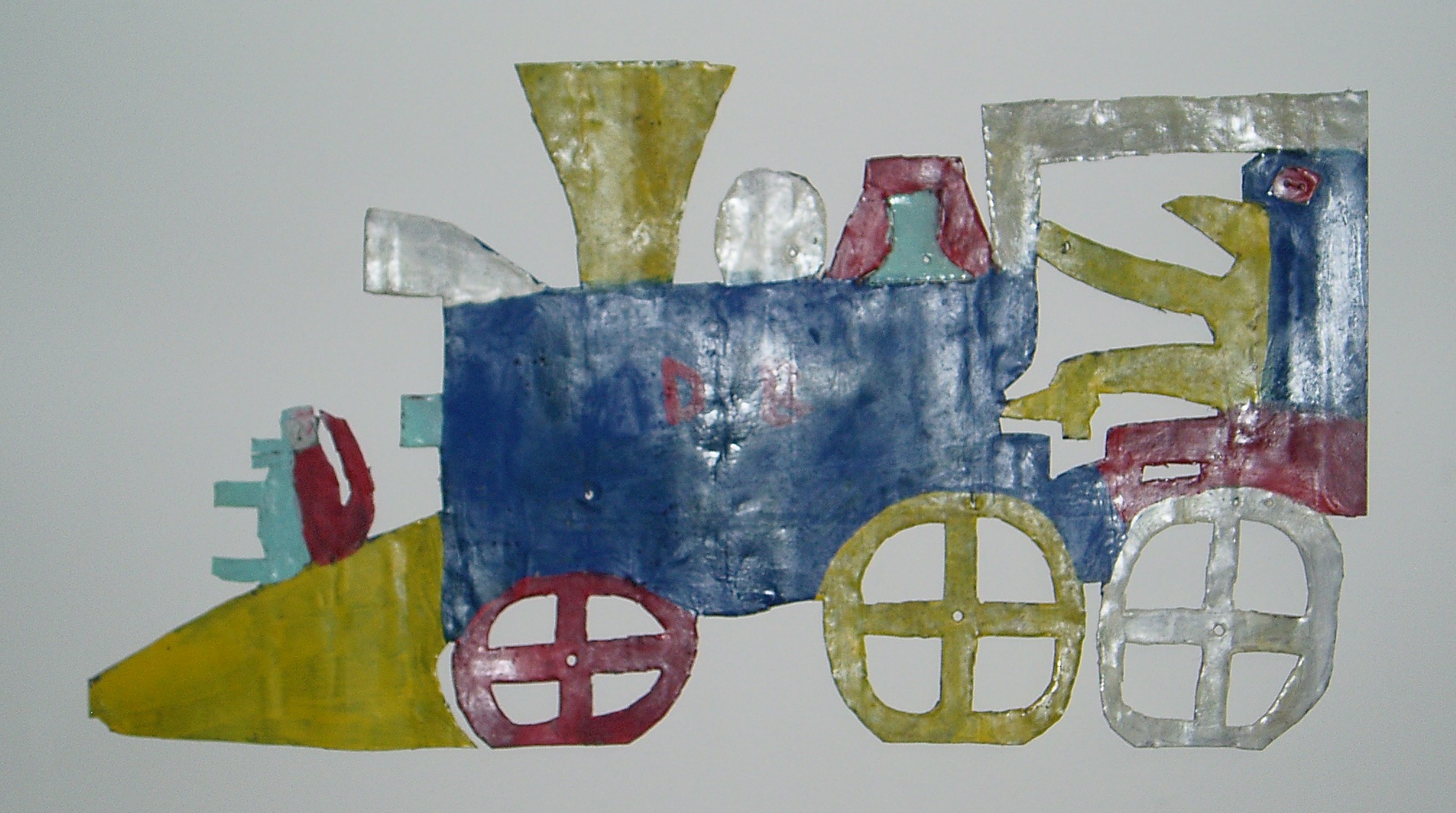
Locomotive
Born in Louisiana in 1898, David Butler was an “outsider” artist known for his talent in creating yard art from tin cut outs and other found items. Butler was considered highly inventive and visual, crafting colorful animals, dragons, mermaids, and people from tin as he sat on the ground, using a hammer and modified ax head to create original works of art using his keen knowledge of color and spatial relationships.
Unlike many self-taught artists who only gained fame following their deaths, David Butler experienced success during his lifetime, holding several museum and gallery exhibitions at various locations including the Delaware Art Museum and Philadelphia Museum of Art.
Living to the ripe old age of 99, Butler was one of the original recognized stars of Southern African-American yard art. His home in Patterson, Louisiana is where he created an amazing tin zoological environment both inside and outside his home. He did this over several decades, and began his work as an artist at middle age, after his employment at a sawmill left him injured. The 1982 exhibition “Black Folk Art in America, 1930-1980” held at Washington, DC’s Corcoran Gallery, is where Butler’s art first rose to prominence. Unfortunately, one year later in 1983 illness would strike Butler, resulting in his having to move in with his family, away from the zoological environment he had created.
Butler liked to call the “creatures” he created “critters.” He drew inspiration both from mythological sources, and the Bible, as his mother was a missionary. Butler’s family’s religious beliefs impacted his artistic vision to an extent; he also created kinetic sculptures which included windmills, weathervanes, and spinning “whirligigs.”
An interesting fact is that Butler’s artistic ability developed somewhat due to the fact that he desired color in his yard during winter months, when the “real” flowers he had planted in spring would disappear. Some of the results of his imagination include cowboys, alligators, sea monsters, even flying elephants. Some of his works of art include “Two Headed Dragon Wagon,” “Peacock,” “Train,” “Man in the Moon,” and “Two Wisemen on a Camel.” His work can be found today at Gilley’s Gallery in Baton Rouge, Louisiana.*
*Bio found on Art & Design
Photo from Philadelphia Museum of Art Website (courtesy Richard Gasperi)
Additional Links:
Smithsonian American Art Museum
Gilley’s Gallery

